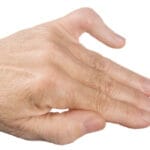Understanding the Healing Process for Arm Injuries
Arm injuries are among the most common musculoskeletal injuries and can affect anyone, from athletes to office workers. Understanding how the body heals from these injuries is crucial for effective treatment and prevention of further complications. The healing process involves several phases that aim to repair damaged tissues, restore mobility, and regain strength. This comprehensive guide will explore these phases, the factors that influence recovery, and provide answers to some frequently asked questions about arm injuries.
The Phases of Healing
The healing process for arm injuries typically occurs in three main phases:
1. Inflammatory Phase (Acute Phase)
This phase begins immediately after injury and lasts for a few days. During this period, the body’s immune system responds to the injury by sending white blood cells and other chemicals to the injured area. Swelling, pain, redness, and warmth are common symptoms during this stage, which helps protect the injured area and prevent further damage. Blood clots form to stop bleeding, and the body starts the process of cleaning up damaged tissue.
Management during the inflammatory phase:
- Rest: Avoid using the injured arm to prevent further damage.
- Ice: Applying ice can help reduce swelling and pain.
- Compression and Elevation: These techniques reduce fluid build-up and inflammation(
2. Repair Phase (Sub-Acute Phase)
The repair phase typically lasts from several days to six weeks. During this period, the body begins to produce new tissue (mainly collagen) to replace the damaged structures. Scar tissue forms, but this tissue is initially weaker and less organized than the original tissue. Physical therapy often begins in this phase to improve flexibility and prevent stiffness.
Management during the repair phase:
- Light Mobilization: Gentle movements and exercises are essential to help guide the alignment of new tissue.
- Stretching and Strengthening: As pain subsides, it’s important to engage in controlled activities to restore range of motion(
3. Remodeling Phase
This is the final phase of healing, lasting from six weeks to several months or even years, depending on the severity of the injury. During this time, the collagen fibers continue to remodel and strengthen, forming scar tissue that is more organized and better aligned with the original tissue. However, the new tissue rarely regains the full strength of the original, leaving the arm more susceptible to reinjury if proper care isn’t taken.
Management during the remodeling phase:
- Progressive Strengthening Exercises: Focus on building strength gradually to avoid overstressing the new tissue.
- Advanced Rehabilitation: Engage in activities that mimic real-life arm movements to improve function and prevent re-injury(
Factors Affecting Recovery
Several factors can influence how quickly and effectively an arm injury heals, including:
- Age: Older individuals generally experience slower healing due to decreased collagen production and circulation.
- Severity of Injury: More severe injuries, such as fractures or torn ligaments, require longer recovery periods.
- Type of Treatment: Proper treatment, including immobilization, physical therapy, and medication, significantly influences the outcome.
- Nutrition: Adequate nutrition, particularly a diet rich in proteins, vitamins C and D, and minerals like calcium and zinc, is critical for tissue repair(





